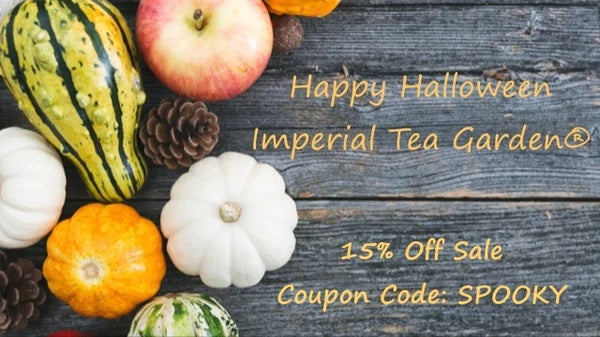How To Buy the Best Loose Leaf Tea - Part 3
How to Buy the Best Loose Leaf Tea
Part three of this five part series examines one more crucial element in producing the best loose leaf tea. Location, location location! Loose leaf tea is harvested in over 40 countries. The top four countries (China, India, Sri Lanka and Kenya) produce 75% of the world's tea. But don't let that discourage you from trying loose leaf teas from other regions. They are often consumed by locals and rarely are sold by online tea stores, but make it a point if you are traveling to any of these tea growing countries.
Choose The Best Tea Growing Regions
China
Tea has been cultivated in China for nearly 5000 years and has been the leading producer in both quantity and quality. Most Chinese green teas and oolong teas come from of Anhui, Zhejiang, and Fujian Provinces and set the standard for what quality teas should taste like. Chinese black teas are mainly produced in the provinces of Yunnan, Hunan, and Sichuan. They often have a smooth, mild and sweet flavor. The best known black teas are from Keemun because of the remarkable wine like characteristics.
China is also one of the few countries that produces specialty teas infused with fragrant flowers such as Jasmine, Rose or Lychee. These teas are processed by steaming the leaves with flowers and blossoms so that they absorb their flavor and taste. The production of these teas coincide with the harvest cycle of the fresh flowers. Dragonwell Lung Ching is probably the most widely known in tea communities but there are so many quality green and white teas available that it take years to fill your tea passport.
India
India as a whole is the 2nd leading tea producer and is known for some of the best black teas in the world. The majority of the tea produced in India is black although there is an increasing amount of green and white teas being produced from from the best tea estates. Over 70% of the tea produced in India is consumed within the country itself and the rest is exported. While the volume the entire country produces is impressive, there are three distinct tea growing regions in India – Darjeeling, Assam and the Nilgiri region.
Assam
Assam is the largest tea growing region in the world. The high plateau in northern India straddles the Brahmaputra River. Tea bushes are dormant during the cool weather from December through February. The first harvest of the year starts in February after the dormant period. First flush teas from Assam have a fragrant flowery character and are golden yellow in the cup. Full bodied and malty Assam teas peak during the second flush. The very best Assam teas are harvested from May through June during the second flush harvest period. The leaves release that full malty character that desired among tea connoisseurs. The color is now a rich coppery red to deep brown. Assam teas are the basis of many popular blends and make delicious iced teas as well.
Darjeeling
Darjeeling is certainly one of the most widely marketed tea growing regions associated with fine loose leaf tea. Located on the southern slopes of the Himalayan Mountains in northeast India, Darjeeling is undoubtedly one of the most famous tea growing regions associated with quality loose leaf black teas. Some of the most precious teas are cultivated in the breathtaking landscape around the small city of Darjeeling.
Darjeeling teas are cultivated at altitudes of 2400–6000 ft. The leaves harvested from the highest tea gardens usually produce the best quality tea. Although the region has just the right climatic conditions for cultivating fine tea bushes, much depends on how the tea is processed.
There are two distinct harvesting periods referred to as the 1st flush ( March - April) and 2nd flush (Mid May through June). The tea produced from the reputable estates command high prices on the global market. Mim Estate is our highest rated antioxidant black tea and certainly should be on your radar.
Nilgiri & Southern India
Southern India tea is cultivated in the hilly uplands of the provinces Karnataka, Kerala, and Tamil Nadu at altitudes of 2400 to 6000 feet. High grown Nilgiris are similar to Ceylon teas - Bright and Astringent. Tiger Hill Estate is one of the finest black teas to showcase what this region has to offer.
Sri Lanka
Sri Lankan tea is often referred to by the old country name Ceylon. At around 60 % of its net export profits, tea is the most important export of Sri Lanka, a land of mild, subtropical climate and diverse vegetation. The most important tea-growing areas are located in the central highlands. Ceylon tea is divided into three categories: Low grown tea that grows under 650 meters, medium grown tea that grows between 650 and 1300 meters, and high grown tea that grows between 1300 and 2500 meters.
There are three tea districts in the central highlands around Adam’s Peak: If you are searching for one of the best teas on earth - Adam's Peak is certainly going to be at the top of the list. A bit of knowledge and a discernible palate is a must when judging this white needle tea. Uva in the east, Dimbula in the west, and Nuwara-Eliya in between. Monsoon and passat winds determine the periods of quality. In the Uva district the best teas grow between June and September. In the Dimbula district the teas containing less tannin are harvested between December and March and have a softer, lighter cup than the Uva tea. In the Nuwara-Eliya district good-quality tea is harvested all year round. Courtlodge Estate is one of Nuwara-Eliya best tea estates.
Taiwan
Taiwan was formerly known as Formosa so many tea drinkers and tea producers still refer to tea grown in Taiwan as Formosan tea. Taiwan is famous for its gunpowder green teas even though it produces many fine oolong teas as well. The oolong teas from Formosa tend to be more heavily oxidized and closer to a black tea than a green tea. Tea is grown throughout Taiwan but the best loose leaf teas comes from the higher altitudes. The first flush of the year begins traditionally on April 20th and reaches its peak on May 6th.
Africa
Africa produces around 15% of the world’s tea. The tea that is produced is almost exclusively CTC (crush, tear, curl) but more and more orthodox high end teas are cropping up due to high demand. Check out Silverback white needle tea from Kenya. Kenyan teas and have been our favorite for producing high grade loose leaf teas but we are looking to explore more teas from Malawi, Uganda, Rwanda, Zimbabwe, Burundi and Ethiopia.
A couple of herbal teas from Africa are worth mentioning because they are just so GOOD!
Rooibos tea (Aspalathus linearis) is a legume, the same family of plants to which peas and clover belong. It is native to the Western Cape of South Africa, where is it a popular drink; translated from Afrikaans, rooibos means “red bush.” Young branches are cut from the shrub once a year (December–April). These cuttings are finely chopped and bruised to promote oxidation, are then moistened and layered (a “sweating” step), and finally are dried. During this processing, the green leaves turn red, yielding a flavor that is somewhat woody, sweet, and creamy.
Honeybush tea (Cyclopia sp.)(aka “Mountain tea” or “Cape tea”):
In South Africa, its country of origin, honey bush tea, with its natural honey-like sweetness and flavor, is preferred over Black tea. The dried leaves contain little tannin and is caffeine.
Japan
Japan is the only major tea producing country in the world to almost exclusively process only green tea. Around 97% of which is consumed internally which leaves very little available for export. Its three major tea-growing regions are Shizuoka, Kagoshima, and Uji. Tea spread throughout Japan after it was brought there in the 8th century from China by a Buddhist monk. The most important tea-growing district is Shizuoka, which lies in picturesque surroundings at the base of Mount Fuji. Half of Japan’s total tea production is harvested here. The other two important areas are Kagoshima on the island of Kyushu and Uji district of Kyoto.
Nepal
Since the privatization of many of the tea gardens in Nepal, growing conditions and efficiency have taken a giant leap forward and they are now producing some of finer types of tea that are reminiscent of Darjeeling varieties. Jun Chiyabari has been a consistent producer of fine black teas and is our top pick.
Brazil
Indonesia
Java and Sumatra are noted for their coffee and tea production. The tea gardens on Java and Sumatra harvest all year round. Java shows a distinct peak in quality during the dry season during the months of July through October. Quality and flavor of Javanese tea is low for the remainder of the year.
Sumatra produces medium quality all year round. Indonesian teas are usually processed and used in blends for British markets. Most tea gardens specialize in producing teas for mass produced box store branded teas and tea bags and are not suitable for discerning loose tea drinkers.
Argentina
Bangladesh
Approximately 85% of the tea gardens in Bangladesh are located in the region of Sylhet. Production is from April to December with harvesting suspended from January through March due to cool weather. Peak quality is harvested in May and June and suitable for those looking for premium teas otherwise production is mediocre at best.
Top 10 Tea Producing Countries by Volume (2016 Data)
Click the following links to get more information on how to buy the best teas online
Leave a comment
Comments will be approved before showing up.




Imperial Tea Garden
Author